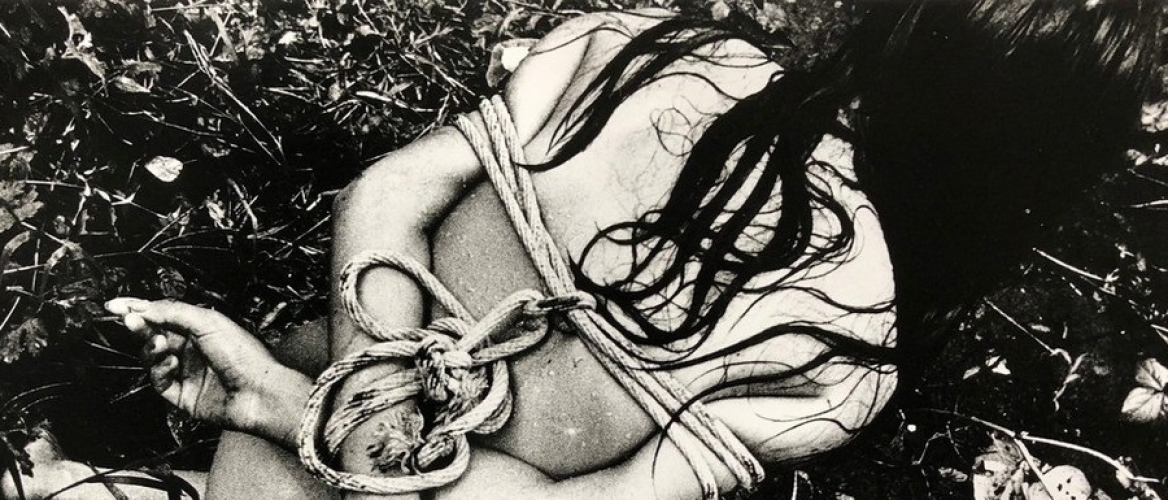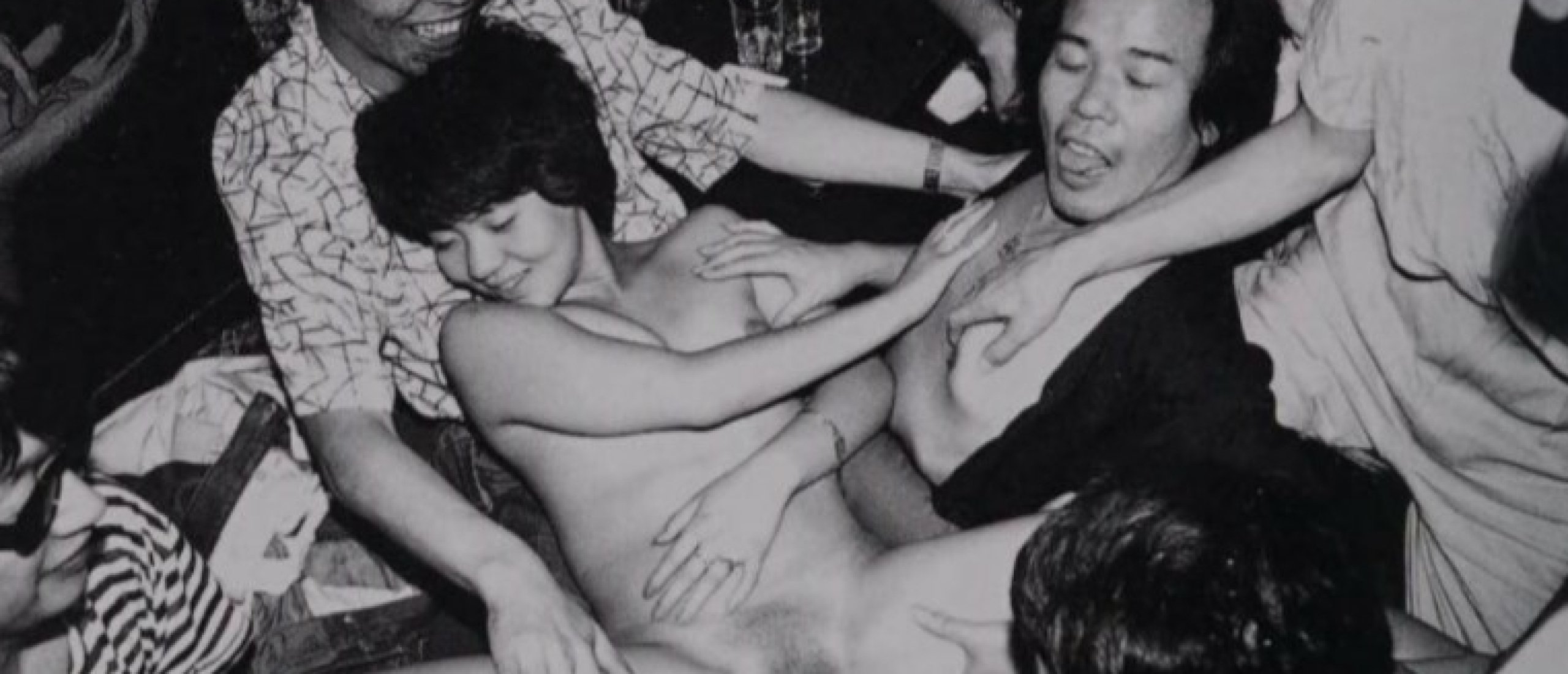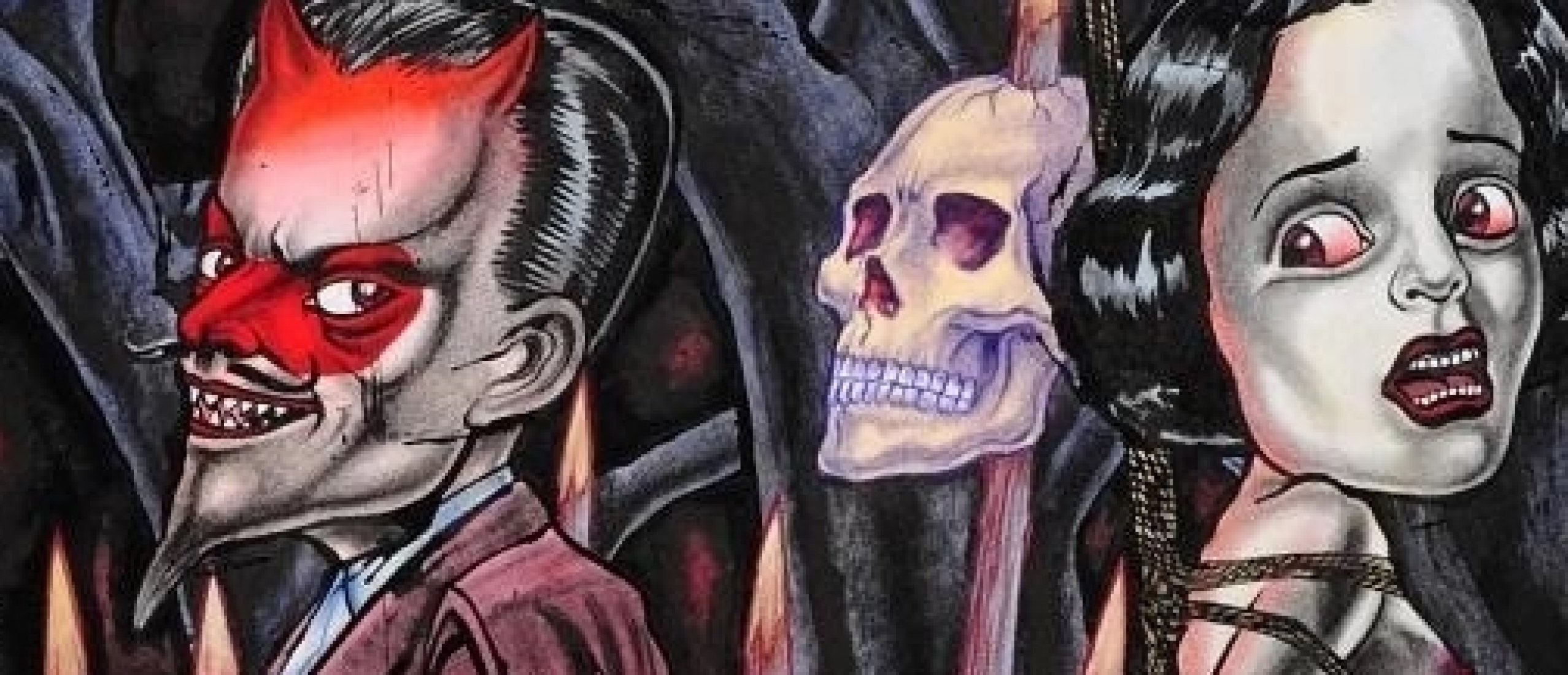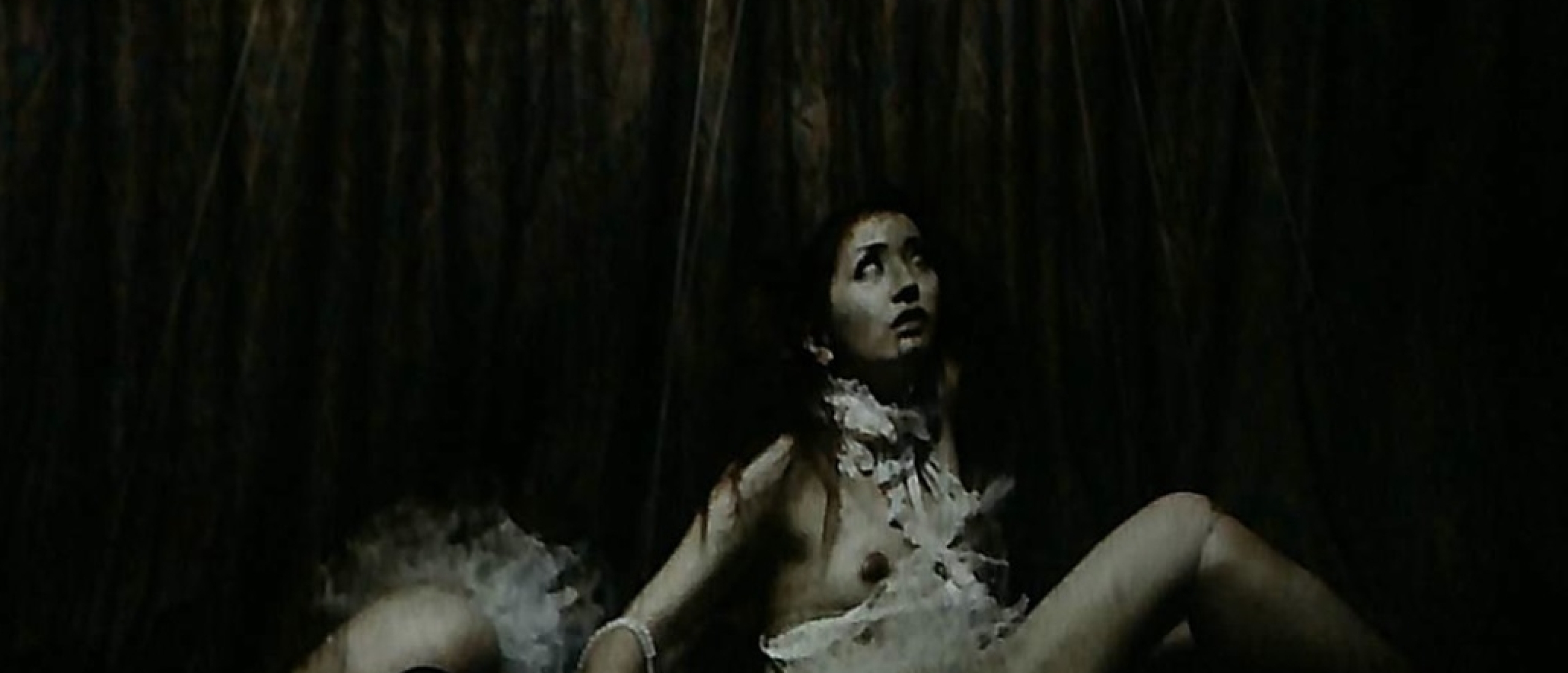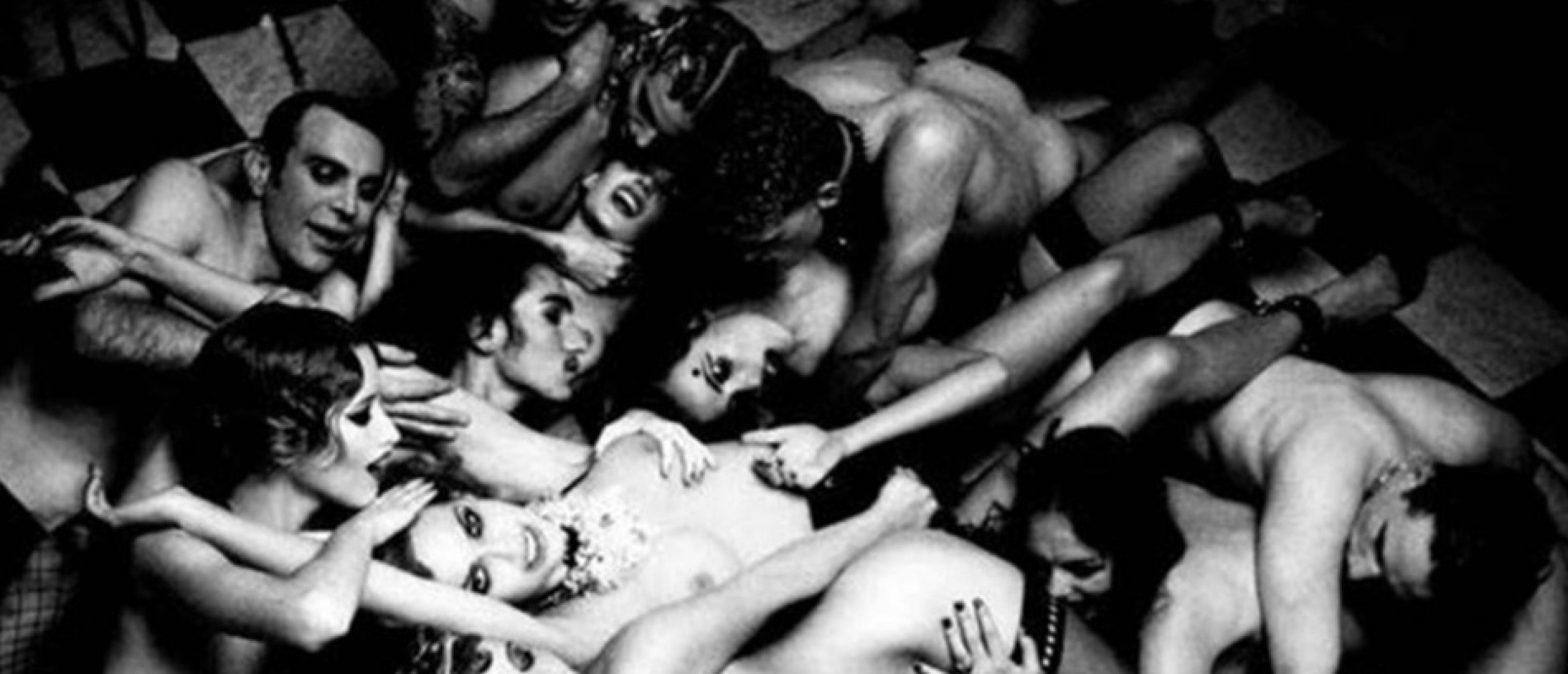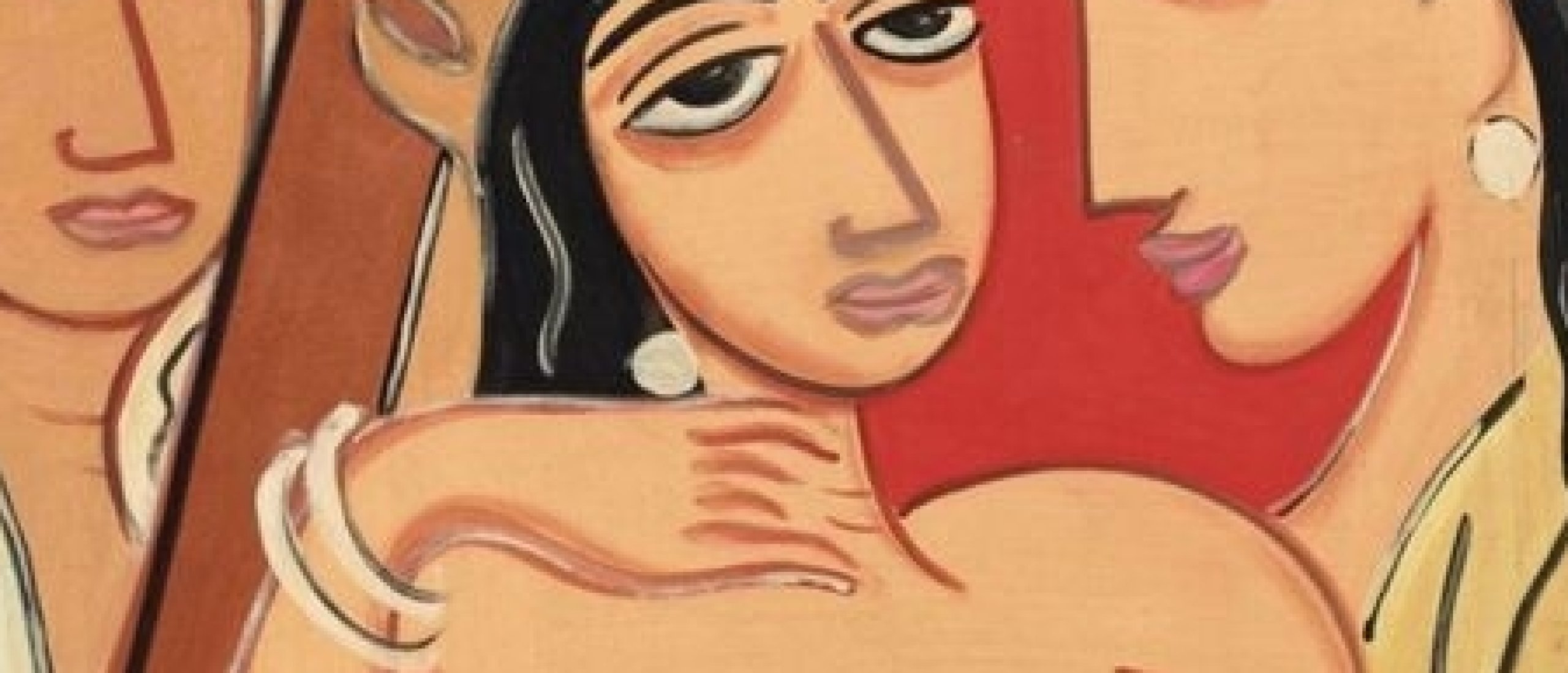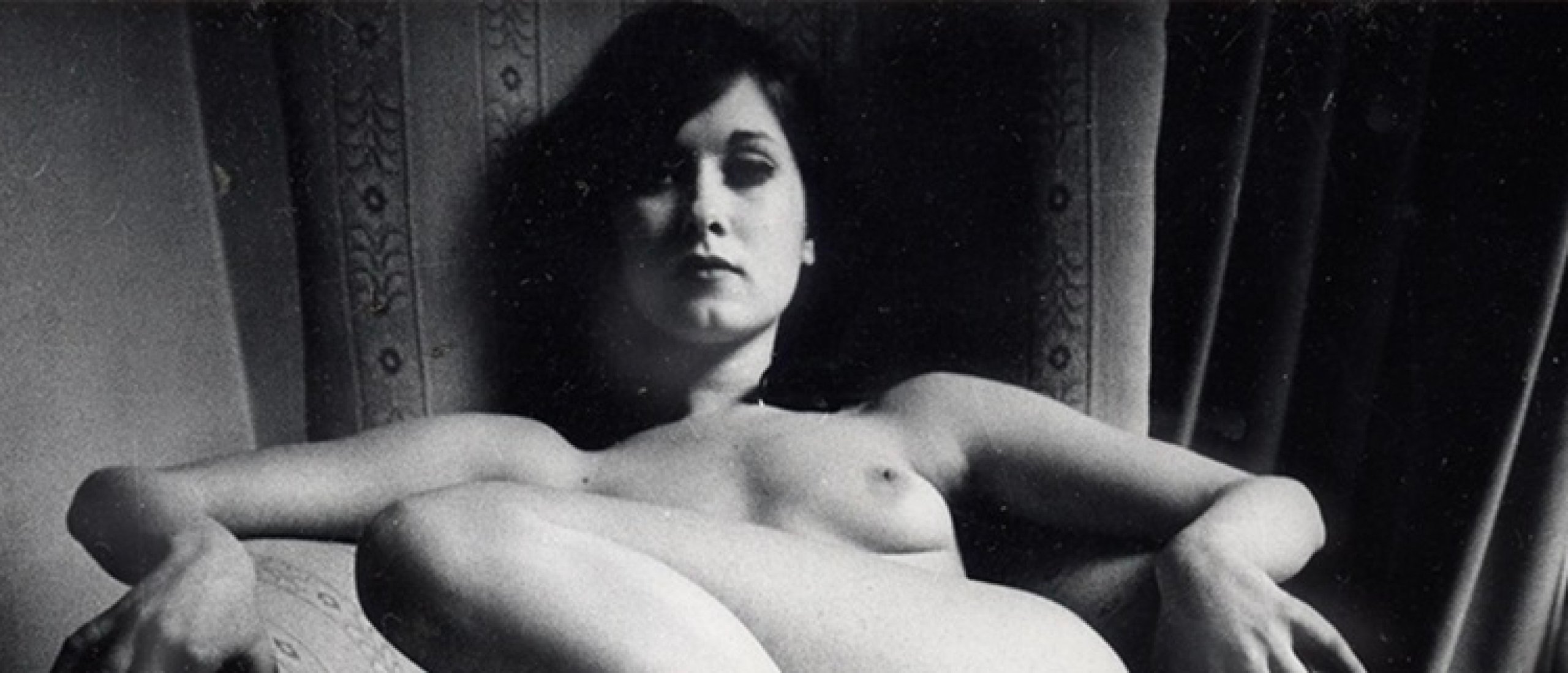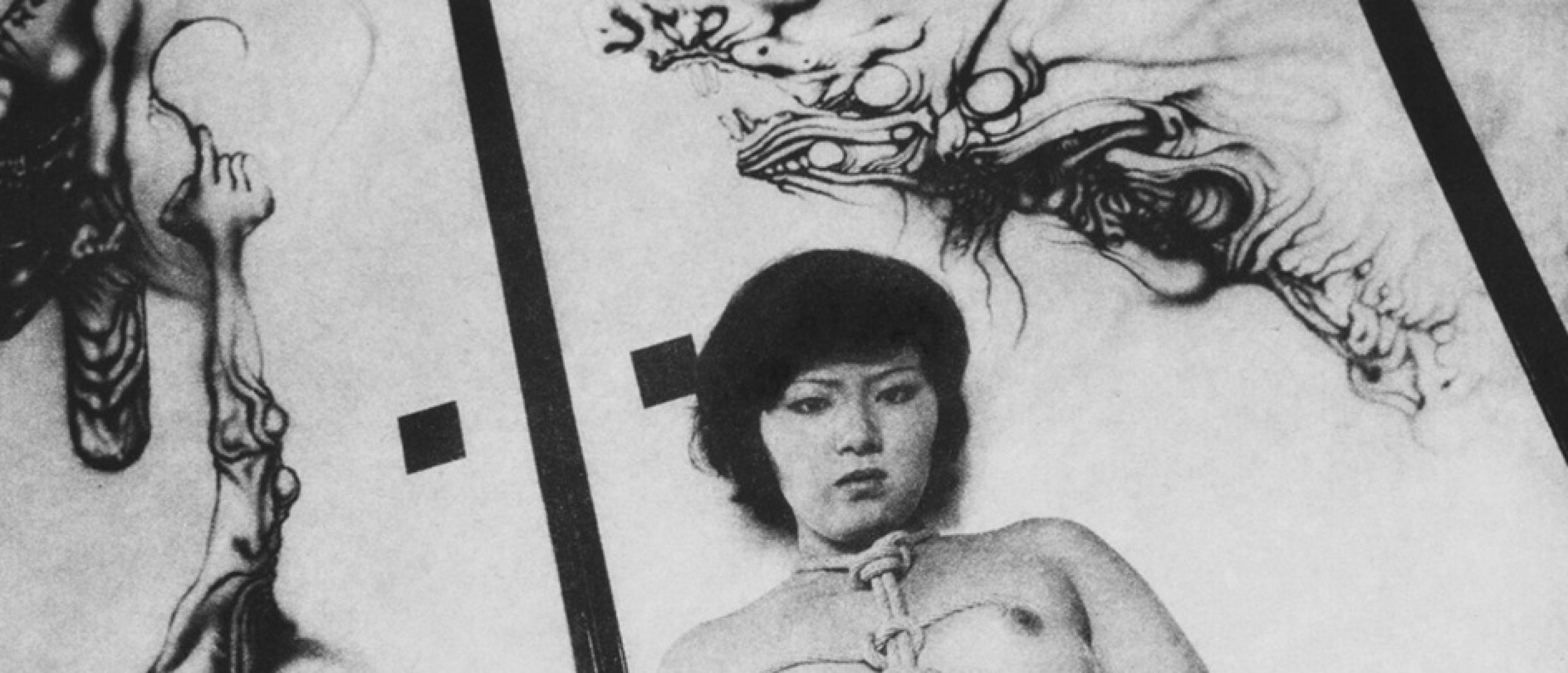
Ephemerality As A Starting Point
In 1972, Daido Moriyama (森山 大道), one of the most important names in post-war Japanese photography, released a singular work, still little discussed outside specialized circles to this day: Kagero (蜉蝣), a Japanese term for "ephemeral" or "mayfly," an insect known for its extraordinarily brief life cycle. Published as a special, limited edition, the book brings together eighteen photogravures of nude women in kinbaku positions, the traditional Japanese art of bondage, captured in natural settings. The project was the result of a collaboration with Dan Oniroku, a writer celebrated for his sadomasochistic erotic fictions and a constant presence in the literary and cinematographic circles of pinku eiga.
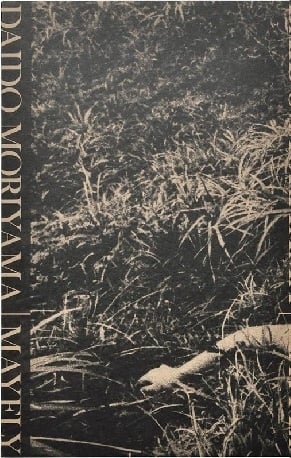
Fig.1 Cover Kagero (Mayfly), 1972
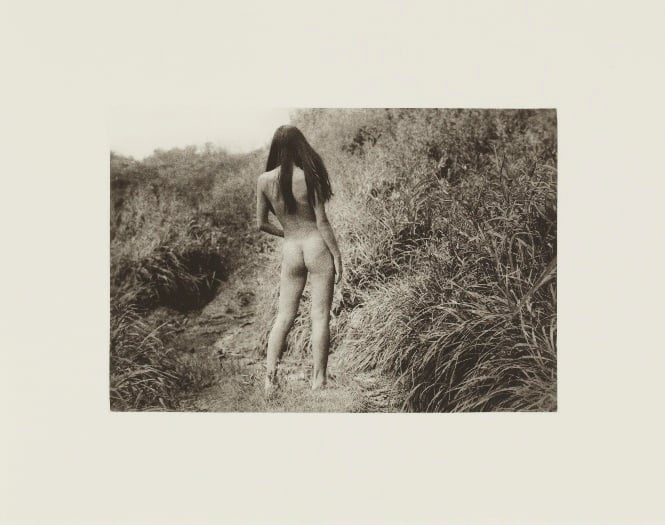
Fig.2
Throughout the images, Daido Moriyama ensures that the act of tying and submitting, far from a simple fetishistic staging, can be considered and used as a tool to explore themes such as desire, pain, and finitude. In this sense, Kagero can be read as both a continuation of and a break from the Provoke movement, of which Daido Moriyama was a fundamental part. While works like Provoke #2: Eros (fig.3) questioned the limits of representation and visual language, Kagero decisively delves into the intersection of eroticism and death, pleasure and ruin, by allowing the body to be not just represented, but transfigured through the photographic lens. Thus, in Kagero, the bound body becomes the center of a poetics of vulnerability, where the marks left by the ropes function as inscriptions sustained simultaneously by rational control and the chance of the photographic image. Therefore, Daido Moriyama's photography abandons the pursuit of documentary sharpness and plunges into a sensory and fragmented register, highlighting the instability of identity and the ephemerality of human experience.

Fig.3 Eros, from Provoke 2, 1969

Fig.4
The Tradition Of Kinbaku And the Legacy Of Ito Seiu
To understand the depth of Kagero's images, it is necessary to look back to the early 20th century, when the artist Ito Seiu (伊藤晴雨, 1882–1961) began to incorporate kinbaku into his work as an aesthetic and symbolic element. Considered the “father of modern kinbaku,” Ito Seiu revived the immobilization technique historically used by Japanese authorities, hojōjutsu, and reinterpreted it for erotic and artistic purposes. In his drawings and paintings, female bodies were depicted in states of suspension, pain, and surrender, establishing a type of eroticism that involved submission, theatricality, and voyeurism.
This heritage is visible in Kagero, both in the composition of the images and in the choice of natural settings, which evoke the tension between the human body and the indifferent vastness of the landscape. Like Ito Seiu, Daido Moriyama is not merely interested in nudity or fetish, as what is at stake is the visual potential that bondage can offer by revealing what lies hidden beneath the surface.

Fig.5
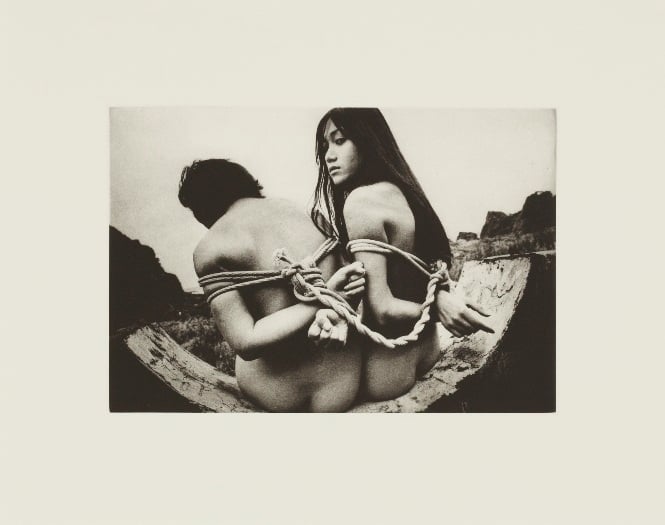
Fig.6
The Body As Language
In Kagero 's images, the women are always partially hidden, fragmented by shadows, branches, ropes, or camera angles. Daido Moriyama avoids frontality and prefers to work with sharp contrasts and grainy textures, a hallmark of his characteristic technique, which uses high contrast and grain to destabilize the image's sharpness and, by extension, the objectivity of the gaze. The anonymous models become bodies-as-signs, supports for an unresolved tension, as they are neither protagonists nor passive. They are there as enigmas, pierced by the photographer's gaze, by the gestures of the assistants who tie them, by the author's aesthetic and narrative intentions.
In some images, the model seems to float in a void, suspended by ropes, as if torn from everyday reality and inserted into a dreamlike and disturbing space. In others, the natural landscape, with its branches, trunks, stones, and water, envelops the human figure almost indifferently, reminding the viewer that the body is, after all, ephemeral matter.
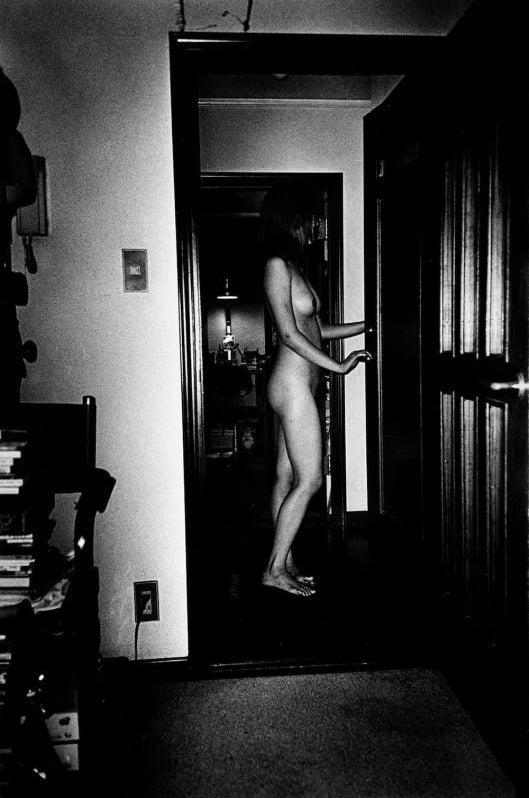
Fig.7
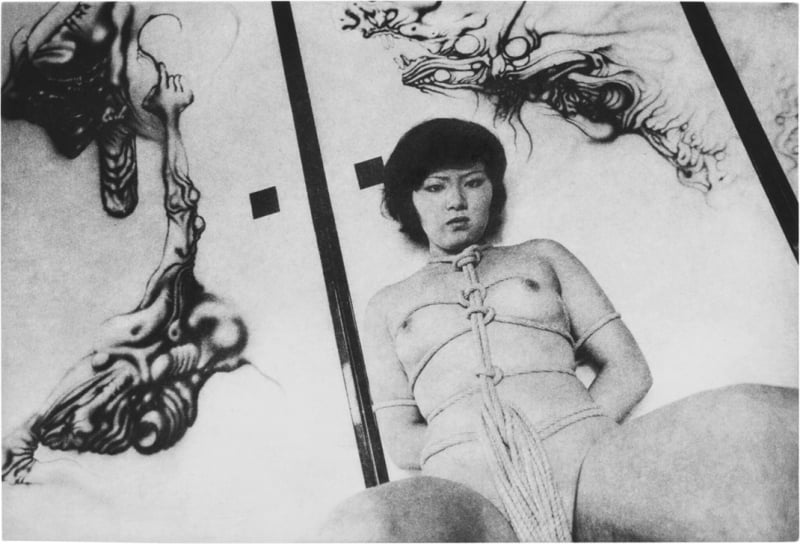
Fig.8
In the extended Premium edition more on how Moriyama uses the body as language in Kagero, a clear analysis of its complex aesthetics, more on Moriyama's collaboration with Dan Oniroku, the unique production of the portfolio, additional striking imagery, and more...!!
Click HERE for an earlier article on the eroticism and fetishism in the photographs of Daido Moriyama
Let us know your thoughts on Moriyama's Kagero in the comment box below..!!

